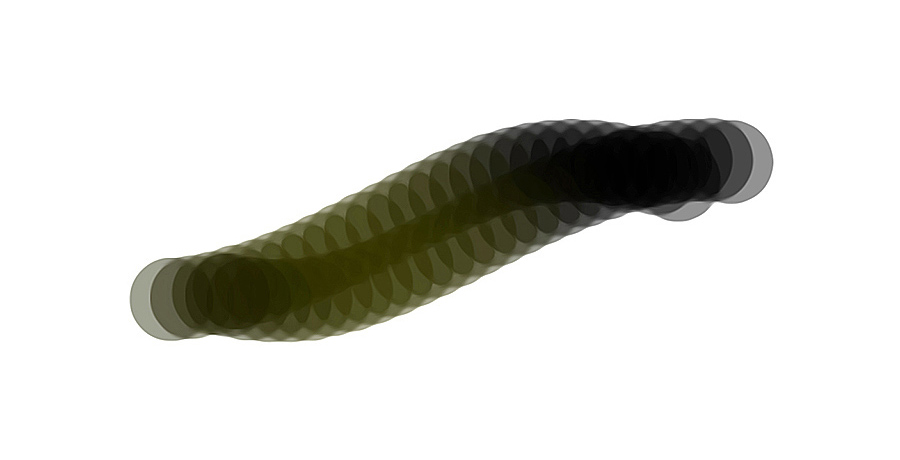When he was two years old, Ben stopped seeing out of his left eye. His mother took him to the doctor and soon discovered he had retinal cancer in both eyes. After chemotherapy and radiation failed, surgeons removed both his eyes. For Ben, vision was gone forever.
But by the time he was seven years old, he had devised a technique for decoding the world around him: he clicked with his mouth and listened for the returning echoes. This method enabled Ben to determine the locations of open doorways, people, parked cars, garbage cans, and so on. He was echolocating: bouncing his sound waves off objects in the environment and catching the reflections to build a mental model of his surroundings.
Echolocation may sound like an improbable feat for a human, but thousands of blind people have perfected this skill, just like Ben did. The phenomenon has been written about since at least the 1940s, when the word “echolocation” was first coined in a Science article titled “Echolocation by Blind Men, Bats, and Radar.” […]
Neuroscience used to think that different parts of the brain were predetermined to perform specific functions. But more recent discoveries have upended the old paradigm. One part of the brain may initially be assigned a specific task; for instance, the back of our brain is called the “visual cortex” because it usually handles sight. But that territory can be reassigned to a different task. There is nothing special about neurons in the visual cortex: they are simply neurons that happen to be involved in processing shapes or colors in people who have functioning eyes. But in the sightless, these same neurons can rewire themselves to process other types of information. […]
we refer to the brain’s plasticity as “livewiring” to spotlight how this vast system of 86 billion neurons and 0.2 quadrillion connections rewires itself every moment of your life. […]
In Ben’s case, his brain’s flexible wiring repurposed his visual cortex for processing sound. As a result, Ben had more neurons available to deal with auditory information, and this increased processing power allowed Ben to interpret soundwaves in shocking detail. Ben’s super-hearing demonstrates a more general rule: the more brain territory a particular sense has, the better it performs. […]
Recent decades have yielded several revelations about livewiring, but perhaps the biggest surprise is its rapidity. Brain circuits reorganize not only in the newly blind, but also in the sighted who have temporary blindness. In one study, sighted participants intensively learned how to read Braille. Half the participants were blindfolded throughout the experience. At the end of the five days, the participants who wore blindfolds could distinguish subtle differences between Braille characters much better than the participants who didn’t wear blindfolds. Even more remarkably, the blindfolded participants showed activation in visual brain regions in response to touch and sound. When activity in the visual cortex was temporarily disrupted, the Braille-reading advantage of the blindfolded participants went away. In other words, the blindfolded participants performed better on the touch- related task because their visual cortex had been recruited to help. After the blindfold was removed, the visual cortex returned to normal within a day, no longer responding to touch and sound.
But such changes don’t have to take five days; that just happened to be when the measurement took place. When blindfolded participants are continuously measured, touch-related activity shows up in the visual cortex in about an hour. […]
In the ceaseless competition for brain territory, the visual system has a unique problem: due to the planet’s rotation, all animals are cast into darkness for an average of 12 out of every 24 hours. (Of course, this refers to the vast majority of evolutionary time, not to our present electrified world.) Our ancestors effectively were unwitting participants in the blindfold experiment, every night of their entire lives.
So how did the visual cortex of our ancestors’ brains defend its territory, in the absence of input from the eyes?
We suggest that the brain preserves the territory of the visual cortex by keeping it active at night. In our “defensive activation theory,” dream sleep exists to keep neurons in the visual cortex active, thereby combating a takeover by the neighboring senses. […]
In humans, sleep is punctuated by rapid eye movement (REM) sleep every 90 minutes. This is when most dreaming occurs. (Although some forms of dreaming can occur during non-REM sleep, such dreams are abstract and lack the visual vividness of REM dreams.)
REM sleep is triggered by a specialized set of neurons that pump activity straight into the brain’s visual cortex, causing us to experience vision even though our eyes are closed.
{ Time | Continue reading }



















